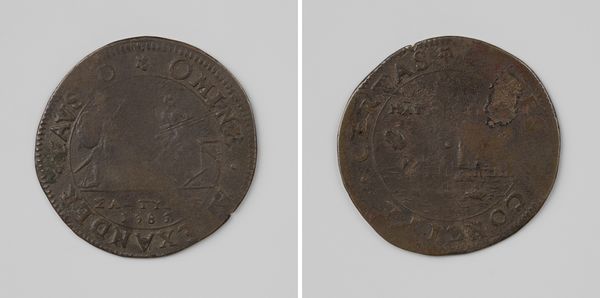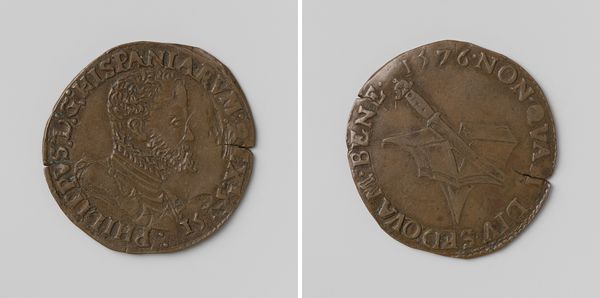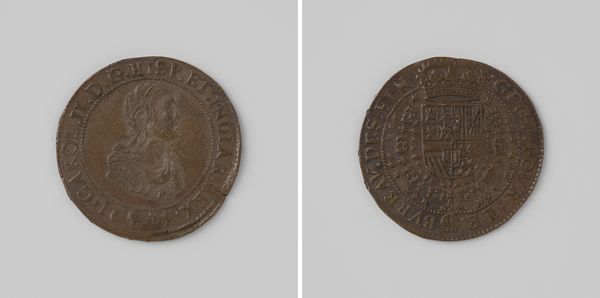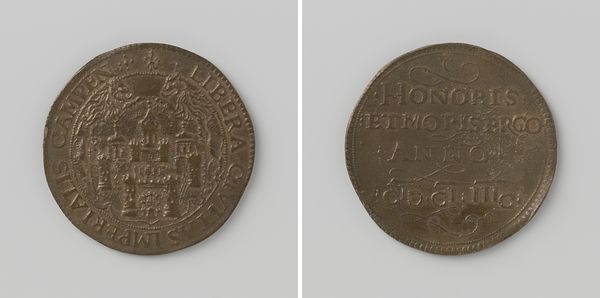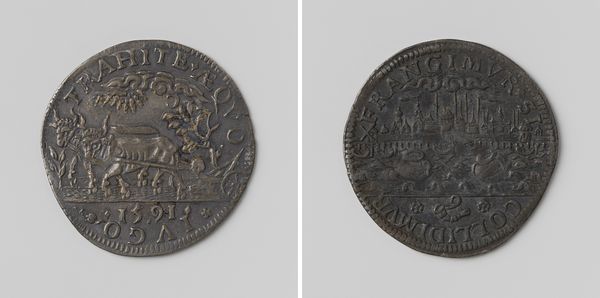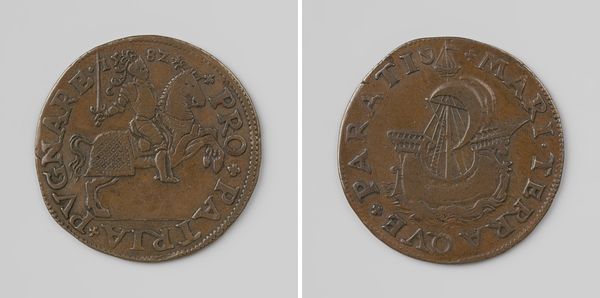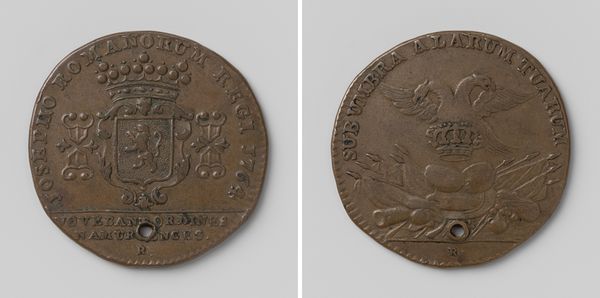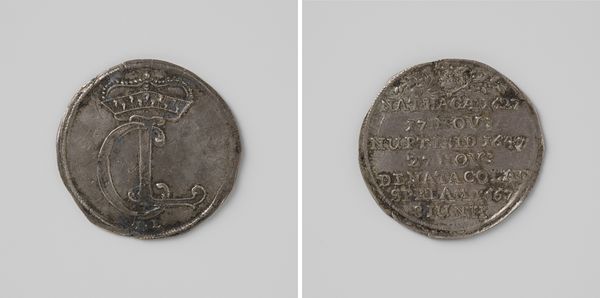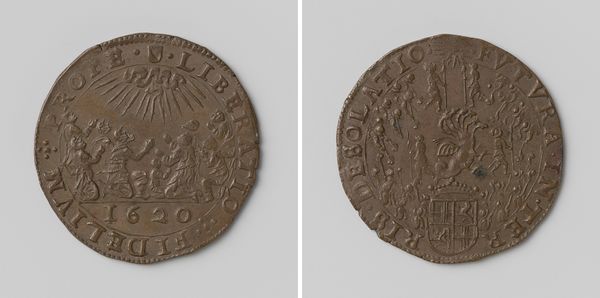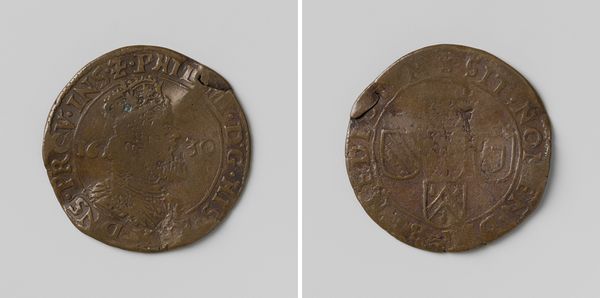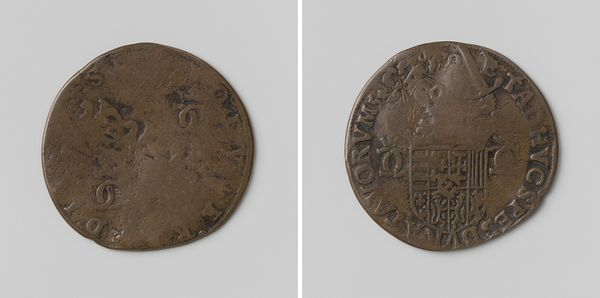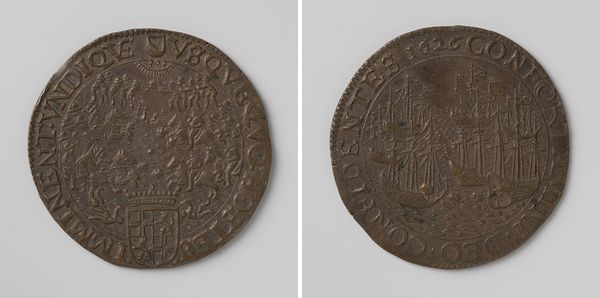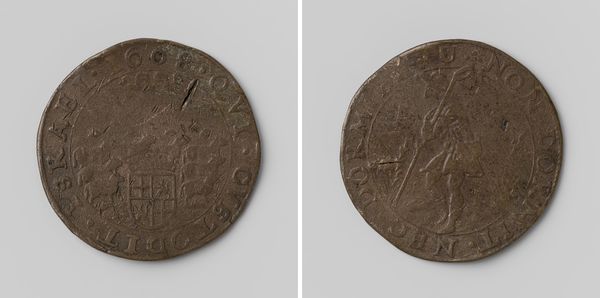
Verdrijving van de vijand uit Amersfoort en de Veluwe en inname van 's-Hertogenbosch en Wezel door Frederik Hendrik, prins van Oranje-Nassau 1629
0:00
0:00
carving, metal, relief
#
portrait
#
carving
#
baroque
#
metal
#
sculpture
#
relief
#
carved
#
history-painting
Dimensions: diameter 3.3 cm, weight 6.76 gr
Copyright: Rijks Museum: Open Domain
This medal, created anonymously, commemorates Frederik Hendrik's military victories with symbols deeply rooted in the cultural and historical context of 17th-century Dutch warfare. We observe inscriptions detailing specific victories, such as the capture of 's-Hertogenbosch, coupled with the coat of arms of the House of Orange-Nassau, which asserts power and victory. Consider how this triumphant imagery echoes through history, from ancient Roman coins celebrating imperial conquests to Renaissance medals honoring princely achievements. The Roman concept of 'Gloria' and the display of power through military success were recurrent in many historical contexts. The emotional power of such imagery lies in its appeal to collective pride and national identity. These images tapped into the subconscious desires of the population to see their leaders as strong and successful. The medal is a symbol of power that transcends its material form. The psychological impact of such carefully crafted representations cannot be understated. The medal serves as a poignant reminder of how symbols evolve and endure across time, continually reshaping collective memory.
Comments
No comments
Be the first to comment and join the conversation on the ultimate creative platform.
